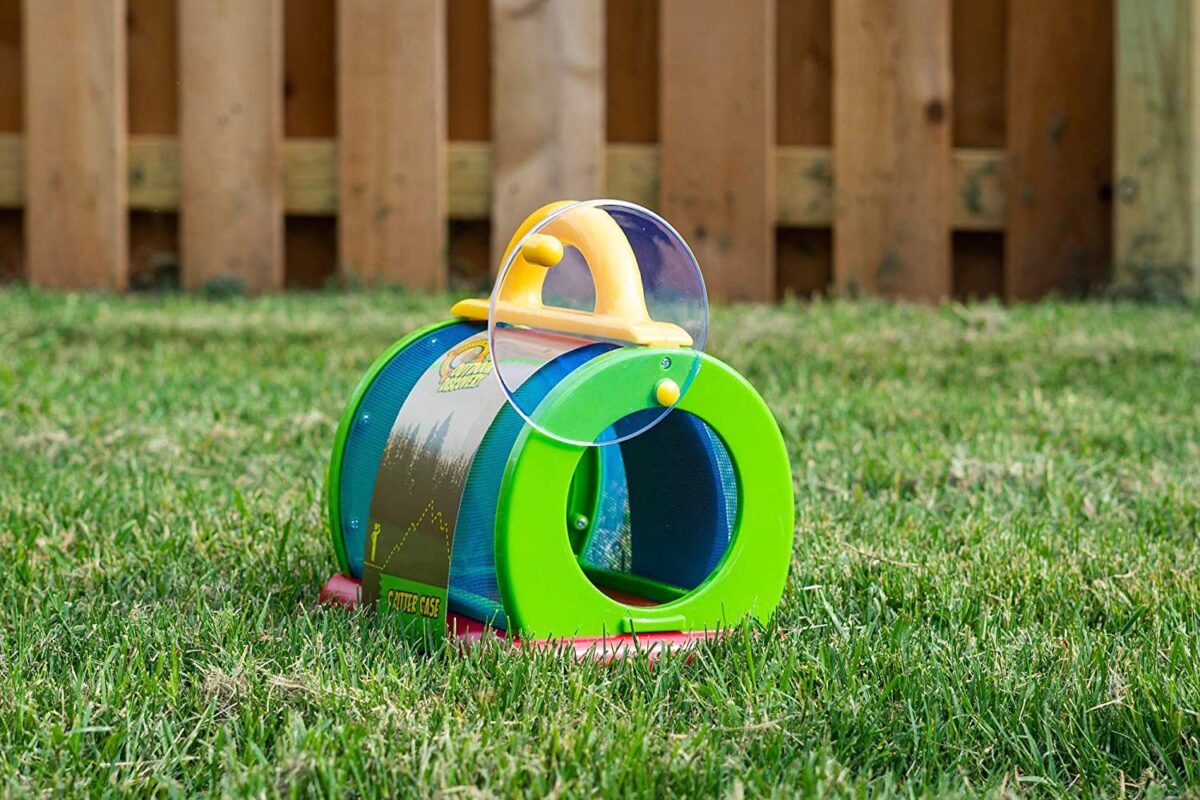
The Best Bug Catcher for Kids
Pest Strategies
Catching bugs is a fun and engaging educational experience for kids. There are multiple ways to safely catch and release insects, so Pest Strategies researched your options to help you find the best bug catcher for your children. Discover our top recommendations below.
https://www.amazon.com/dp/B07QLM375B
ESSENSON Bug Catcher Kit
What We Like: This robust kit comes with a variety of bug-catching essentials to outfit beginners for their new adventure. This exploration kit contains binoculars, a compass, a butterfly net, a magnifying glass, a critter case, a whistle, tweezers, and more to both catch and examine bugs.
https://www.amazon.com/dp/B000JQ5AZK
Carson Bug-Catching Tool and Magnifier
What We Like: This catcher is easy to operate with one hand. It has a capture and view area with a slider that pushes a bottom piece in place after you capture a bug. Once you trap the bug, you can use the small magnifying glass at the top of the viewing area to examine it.
https://www.amazon.com/dp/B07JZ5LL7K
RESTCLOUD Insect and Butterfly Net
What We Like: Easy to carry, quick to adjust, and fun to use, this insect net is designed to waft through the air to catch flying bugs. The telescoping shaft secures with a twist, and the mesh netting is strong enough to handle small mammals and rodents in addition to insects.
https://www.amazon.com/dp/B08WJWH8VP
Nature Bound Bug Catcher Vacuum
What We Like: After pulling the trigger to activate the motor and suck in bugs, explorers can transfer their catch to the included carrier for viewing. The vacuum also features a carabiner clip for easy carrying and an LED light for better visibility.
https://www.amazon.com/dp/B01M0V474Y
B. toys by Battat Bug Bungalow Insect-Catching Kit
What We Like: For those seeking to strike a balance between a complete bug-catching kit and a single tool, this set has all of the essentials that kids need for their insect adventures. The large case features a swinging door to easily close in or let out critters and mesh siding to give them plenty of air to breathe. Additionally, the smaller container has a magnifying lid to make inspecting insects easier.
Buying Guide
If you or your children want to learn more about insects, read our brief overview below on the different types of bug catchers as well as other tools that make bug catching easier and more enjoyable.
- Catcher Type: Bugs can be captured in many ways, but here are a few that we included in our review.
- Vacuum: These bug-catching tools typically use batteries to create enough power to suck insects into a chamber. They’re a convenient way to catch and release bugs without touching them or using additional tools.
- Net: Bug nets are designed to catch butterflies and other winged insects. They usually have relatively large netting to capture larger insects or multiple bugs at a time.
- Slider/Button Tool: These handheld bug catchers are two-in-one tools that allow for catching and viewing. The tool usually has a slider or button to close pincers or walls around a bug. The bug stays there while you inspect it.
- Housing: Some bug catchers come with entrapments to house your bugs temporarily. The entrapments range in size from small containers for bugs to large cases for critters.
- Kit: In addition to being paired with entrapments, some bug catchers come in more complete kits with additional tools. Common accessories include tweezers to hold the bugs and binoculars and magnifying glasses to inspect them.
FAQs
-
Is there a minimum age requirement to use a bug catcher?
Most child bug catchers are designed for kids who are at least three years old. Even then, parental supervision is encouraged.
-
Why should I release bugs when I’m done viewing them?
Releasing them will allow them to continue doing their job to keep the ecosystem in balance. For a lasting memory, take photos or videos of your bugs in captivity before releasing them.
-
What safety precautions should I take when catching bugs?
A bug identification guide is a useful way to ensure that you aren’t handling biting or poisonous bugs. Even if you aren’t, it’s still safe to protect your hands by wearing gloves and using tongs.
Pest Strategies provides reviews of select products that are top-selling on Amazon and/or popular in consumer searches. Our team evaluates the products based on industry research, consumer reviews, pricing data, and other objective criteria. Unless otherwise noted, these product reviews are intended to help inform buying decisions for non-professionals. Because pest control products can be dangerous to your family if mishandled, we always recommend consulting with an exterminator, even if just to ask for advice on how to apply pest control products yourself.